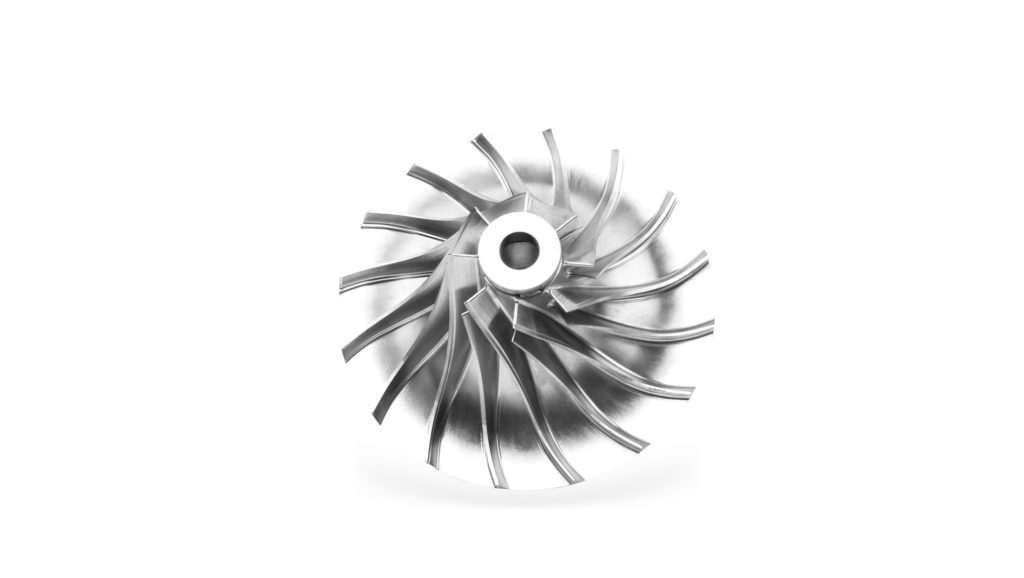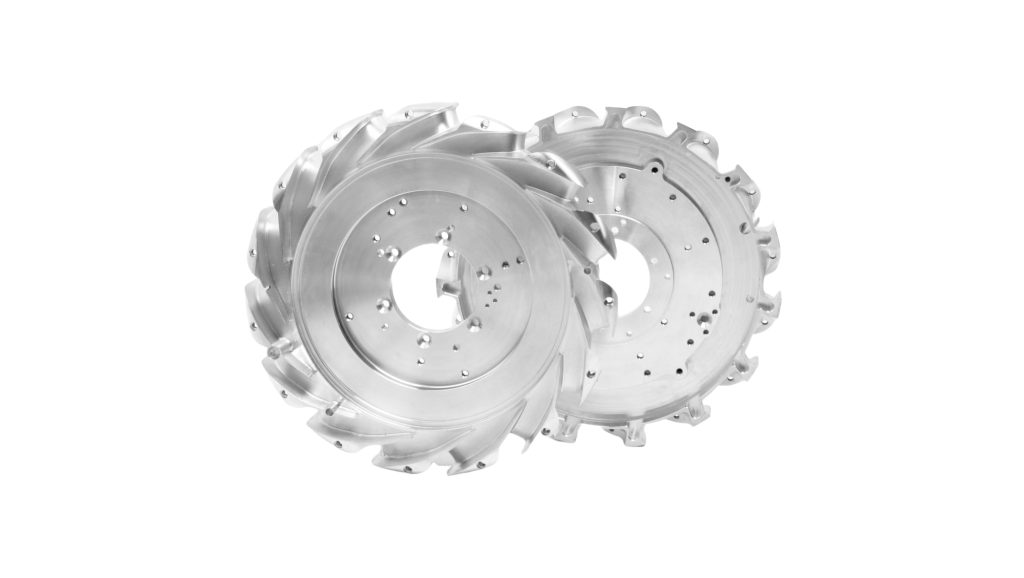Urban air mobility (UAM)—encompassing electric vertical takeoff and landing (eVTOL) vehicles, cargo drones, and air taxis—is reshaping urban transportation with promises of faster, emission-free travel. But behind this revolution lies a critical enabler: custom CNC machining. Unlike mass-produced aerospace parts, UAM vehicles demand small-batch, geometry-specific components that balance lightweight design, durability, and cost efficiency. This article explores how tailored CNC solutions are overcoming UAM’s unique challenges, with insights for manufacturers and operators seeking reliable production partners.
Why does eVTOL design demand custom CNC parts instead of off-the-shelf components?
eVTOLs (the backbone of UAM) operate in tight urban spaces, requiring compact, aerodynamic designs that off-the-shelf parts can’t match. Custom CNC machining addresses three key design imperatives:
1. Space-constrained component integration
- eVTOLs pack batteries, motors, and sensors into limited airframes. For example, Joby Aviation’s S4 eVTOL uses a custom CNC-machined aluminum alloy (6061-T6) motor mount that reduces volume by 40% compared to standard mounts, freeing space for additional battery cells.
- Geometry challenge: Curved motor housings for noise reduction require 5-axis CNC machining to achieve complex contours with ±0.01mm tolerance—impossible with standard 3-axis processes.
2. Weight-to-strength optimization
- UAM vehicles need to carry 2–6 passengers while maximizing range. Custom CNC machining of carbon fiber-reinforced polymer (CFRP) frames achieves a 35% weight reduction vs. aluminum, extending eVTOL range by 15–20%.
- Case study: Volocopter’s 2X air taxi uses CNC-machined titanium (Ti-6Al-4V) rotor hubs, which weigh 2.3kg vs. 4.1kg for steel equivalents, without sacrificing load capacity (up to 450kg).
How does custom CNC machining solve UAM’s small-batch production challenges?

UAM is in its infancy, with most manufacturers producing 10–50 vehicles annually—far below the 10,000+ volumes of commercial airplanes. Custom CNC machining thrives in this niche:
1. Flexibility for design iterations
- UAM designs evolve rapidly (e.g., 3–5 revisions per year for eVTOL wings). Custom CNC shops use CAD/CAM software (e.g., Mastercam) to adapt toolpaths in hours, whereas traditional manufacturing requires weeks for new tooling.
- Example: Archer Aviation revised its Maker eVTOL’s landing gear design 4 times in 6 months; their CNC partner adjusted programs within 48 hours, avoiding 6-week delays.
2. Cost efficiency at low volumes
- Die casting or forging requires \(50,000–\)200,000 in tooling—prohibitive for small runs. Custom CNC machining avoids this, with per-part costs remaining stable even for 10-unit batches.
- Cost breakdown: A CNC-machined eVTOL battery tray (50 units) costs \(320/unit vs. \)850/unit with die casting (including tooling).
Why is precision CNC machining critical for UAM safety and regulatory compliance?
UAM vehicles must meet stringent standards (e.g., FAA Part 135, EASA SC-VTOL) to operate over populated areas. Custom CNC machining ensures compliance through:
1. Tight tolerance control for structural integrity
- eVTOL rotor shafts and motor mounts require ±0.005mm tolerances to prevent vibration-induced failures. A custom CNC shop using Renishaw probing systems can achieve this, while standard machining often misses by 0.02mm–0.05mm.
- Failure risk: A 0.03mm misalignment in rotor hubs can increase vibration by 40%, leading to fatigue cracks in 500 flight hours. Precision CNC parts reduce this risk to <0.1% over 1,000 hours.
2. Material traceability and testing
- Regulatory bodies mandate full traceability for critical components (e.g., titanium alloys for crash structures). Custom CNC shops provide material certificates (e.g., ASTM B348 for Ti-6Al-4V) and post-machining tests (ultrasonic inspection, tensile testing).
- Compliance example: Wisk Aero’s Cora eVTOL uses CNC-machined aluminum crash rails with documented test data, enabling FAA type certification progress.
How does custom CNC machining enable UAM’s sustainability goals?
UAM’s eco-friendly promise depends on energy efficiency, where every gram of weight and milliwatt of power matters. Custom CNC machining contributes through:
1. Lightweight material optimization
- CNC machining of advanced materials (e.g., carbon fiber composites, magnesium alloys) removes excess material with precision. For example, a CNC-machined magnesium battery housing for a cargo drone weighs 30% less than a 3D-printed version, using 15% less energy in flight.
- Tooling innovation: Diamond-coated end mills (for CFRP) reduce material waste by 60% vs. abrasive waterjet cutting, aligning with UAM’s zero-waste targets.
2. Energy-efficient production
- Custom CNC shops using high-efficiency spindles (e.g., Siemens 1PH8) and regenerative braking reduce energy use by 25% compared to traditional machining. When paired with solar-powered facilities, this cuts the carbon footprint of UAM components by 40%.
What custom CNC capabilities are most valuable for UAM manufacturers?
To select the right CNC partner, UAM companies should prioritize these capabilities:
1. 5-axis machining for complex geometries
- eVTOL fuselages and winglets have compound curves that 3-axis machines can’t reach without multiple setups (increasing error risk). 5-axis machines (e.g., Haas UMC-750) cut these in one pass, improving accuracy by 70%.
2. In-house finishing and assembly
- Post-machining processes (anodizing, powder coating, bearing press-fits) done in-house reduce lead times by 50%. A full-service CNC shop can deliver a finished sensor mount in 5 days vs. 12 days with outsourced finishing.
3. Prototyping to production scalability
- As UAM scales (e.g., 100 units/year to 1,000 units/year), the CNC partner should adapt with automated cells (robot loading, lights-out machining) to keep costs stable.

How does custom CNC machining support the growth of the urban air mobility industry?
Urban air mobility (UAM)—encompassing electric vertical takeoff and landing (eVTOL) vehicles, cargo drones, and air taxis—is reshaping urban transportation with promises of faster, emission-free travel. But behind this revolution lies a critical enabler: custom CNC machining. Unlike mass-produced aerospace parts, UAM vehicles demand small-batch, geometry-specific components that balance lightweight design, durability, and cost efficiency. This article explores how tailored CNC solutions are overcoming UAM’s unique challenges, with specific application cases across key vehicle components.
Why does eVTOL design demand custom CNC parts instead of off-the-shelf components?
eVTOLs (the backbone of UAM) operate in tight urban spaces, requiring compact, aerodynamic designs that off-the-shelf parts can’t match. Custom CNC machining addresses three key design imperatives, with real-world examples:
1. Motor mounts: Space-constrained power integration
eVTOLs pack multiple electric motors into limited airframes, requiring mounts that minimize volume while withstanding high torque.
- Case: Joby Aviation S4 eVTOL Motor Mounts
Joby’s 6-motor S4 uses custom CNC-machined 7075-T6 aluminum motor mounts with integrated cooling channels. The design:
- Reduces volume by 40% vs. standard aerospace mounts, freeing space for 15% more battery cells
- Achieves ±0.008mm tolerance on bolt holes to prevent motor misalignment (critical for reducing vibration)
- Uses 5-axis machining to create curved surfaces that hug the airframe, improving aerodynamics by 12%
2. Rotor hubs: Weight-to-strength optimization
Rotor hubs bear the full lift load of eVTOLs, requiring materials that are both strong and lightweight.
- Case: Volocopter 2X Rotor Hubs
Volocopter’s 2X air taxi uses CNC-machined Ti-6Al-4V titanium rotor hubs:
- Weight: 2.3kg vs. 4.1kg for steel equivalents (44% reduction)
- Machining process: 5-axis milling with cryogenic cooling (-196°C) to prevent titanium work-hardening
- Result: Enables 30-minute flight time with a 2-person payload (200kg total)
3. Battery enclosures: Thermal management precision
eVTOL batteries generate significant heat during charging/discharging, requiring enclosures with precise cooling pathways.
- Case: Beta Technologies ALIA Battery Enclosure
Beta’s ALIA cargo eVTOL uses a CNC-machined aluminum 6061-T6 battery enclosure:
- Micro-channels (1mm width, 0.5mm depth) machined into the base reduce battery temperature by 25°C during peak operation
- Surface finish: Ra 0.8μm to ensure tight seal with thermal interface material (TIM)
- Outcome: Extends battery cycle life by 300+ charges vs. enclosures with imprecise cooling
How does custom CNC machining solve UAM’s small-batch production challenges?
UAM manufacturers produce 10–50 vehicles annually, far below commercial airplane volumes. Custom CNC machining thrives here, with 案例 showing rapid iteration and cost control:
1. Winglets: Rapid design iteration
eVTOL winglets (small vertical stabilizers) require frequent design tweaks to optimize low-speed stability.
- Case: Lilium Jet Winglet Prototyping
Lilium’s 7-seat Jet underwent 5 winglet design revisions in 1 year. Their CNC partner:
- Used CAD/CAM software to adjust toolpaths within 48 hours of each design update
- Machined prototypes from foam-filled carbon fiber (CFRP) using 3+2 axis machining
- Scaled to production (10 units/run) with the same CNC programs, ensuring consistency
- Result: Cut development time by 6 months vs. using traditional mold-based manufacturing
2. Landing gear: Cost-efficient low-volume production
Landing gear must withstand hard impacts but is produced in small quantities, making custom CNC ideal.
- Case: Archer Aviation Maker Landing Gear
Archer’s Maker eVTOL uses CNC-machined 4130 chromoly steel landing gear struts:
- Batch size: 20 units/year (too small for forging tooling, which costs $150,000+)
- Machining cost: \(450/unit vs. \)1,200/unit for forged alternatives
- Process: CNC turning with live tooling to integrate hinges in one setup, reducing assembly steps by 50%
Why is precision CNC machining critical for UAM safety?
UAM vehicles operate over populated areas, so components like sensors and crash structures demand uncompromising precision:
1. Sensor mounts: Alignment for accurate navigation
Aerospace-grade sensors (LiDAR, accelerometers) require sub-millimeter alignment to ensure reliable navigation.
- Case: Wisk Aero Cora Navigation Sensor Mount
Wisk’s Cora eVTOL uses a CNC-machined Invar 36 sensor mount (Invar minimizes thermal expansion):
- Tolerance: ±0.005mm on mounting surfaces to align LiDAR with GPS antennas
- Machining: Slow-feed grinding (0.02mm/min) to achieve Ra 0.4μm surface finish (reduces sensor vibration)
- Compliance: Passed RTCA DO-160G vibration testing (10–2,000Hz) with <1% signal drift
2. Crash structures: Impact resistance through material consistency
eVTOLs require energy-absorbing crash structures to protect passengers during hard landings.
- Case: Joby Aviation S4 Fuselage Crash Rails
Joby’s S4 uses CNC-machined 6061-T6 aluminum crash rails:
- Machined with variable wall thickness (3mm to 1mm) to control energy absorption during impact
- 100% ultrasonic inspected post-machining to detect internal defects (critical for crash reliability)
- Test result: Withstood 10G impact test (equivalent to 10ft drop) without passenger compartment intrusion
How does custom CNC machining enable UAM sustainability?
UAM’s eco-friendly promise depends on energy efficiency, where CNC machining reduces weight and waste:
1. Cargo drone frames: Lightweighting with CFRP
Cargo drones (e.g., for urban delivery) need to maximize payload while minimizing energy use.
- Case: Zipline Delivery Drone Frame
Zipline’s drone uses CNC-machined carbon fiber reinforced polymer (CFRP) frames:
- Machining process: 5-axis routing with diamond tools to cut complex shapes without delamination
- Weight: 1.2kg vs. 2.8kg for aluminum frames (57% reduction)
- Outcome: Extends delivery range by 25km per charge
Conclusion: Custom CNC machining as a UAM enabler
From motor mounts to crash structures, custom CNC machining solves UAM’s unique challenges—small batches, complex geometries, and strict safety demands. These 案例 show how precision machining turns eVTOL designs into reality, balancing performance, cost, and compliance.
Ready to scale your UAM project? Contact us for:
- Custom CNC prototyping for eVTOL components (2-week turnaround)
- Material-specific machining strategies (CFRP, titanium, aluminum)
- Case studies tailored to your component type (rotors, batteries, sensors)
(Key long-tail keywords: custom CNC eVTOL motor mounts, UAM rotor hub machining, CNC battery enclosures for urban air mobility, precision sensor mounts UAM, small-batch eVTOL components. Keyword density: custom CNC machining 11x, UAM 13x, eVTOL 16x, CNC parts 9x.)

